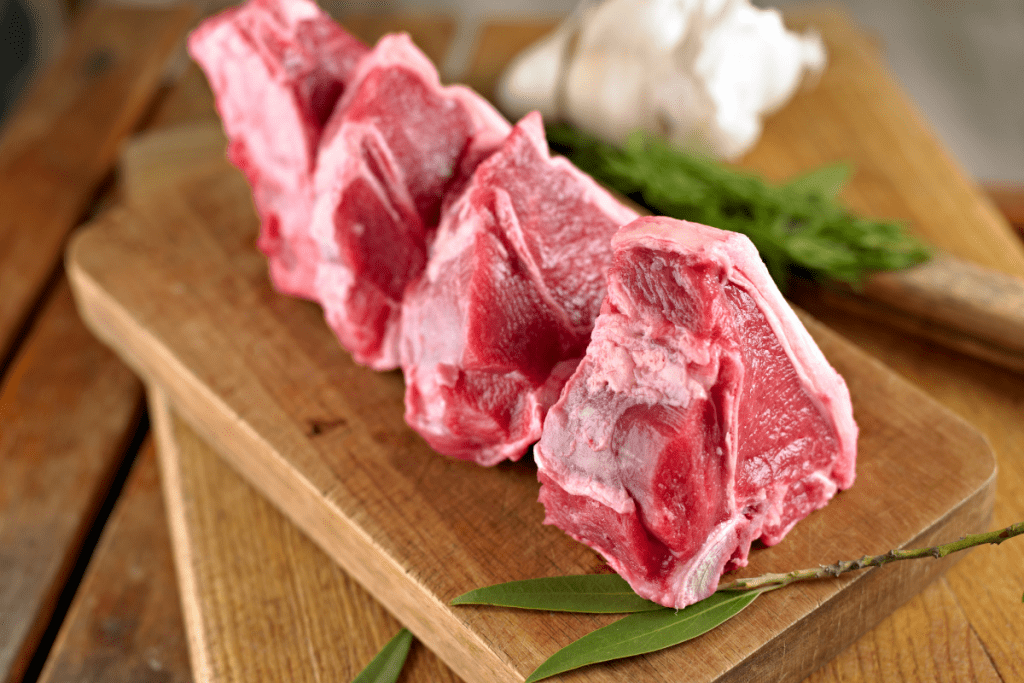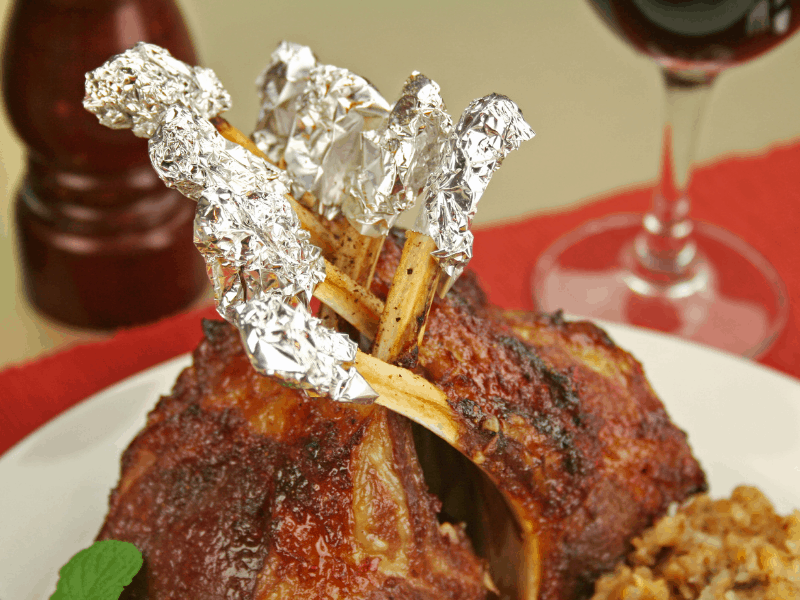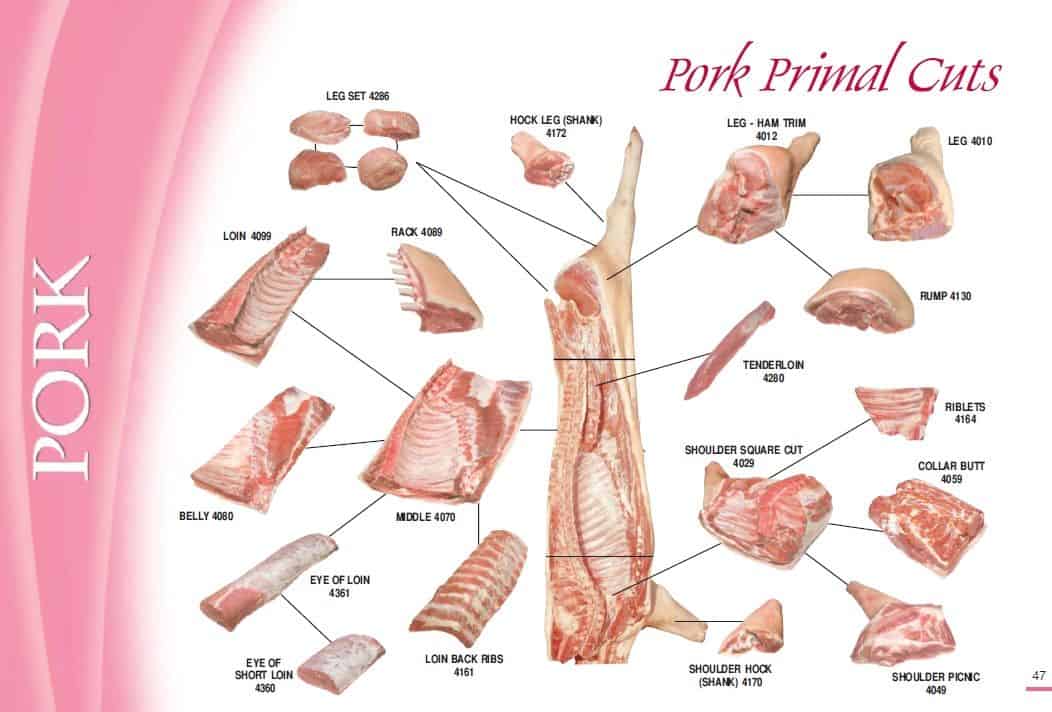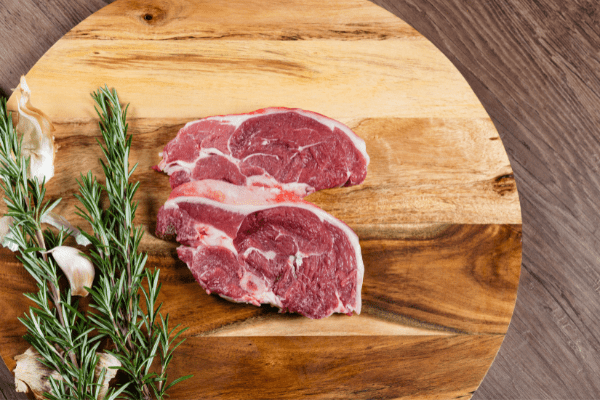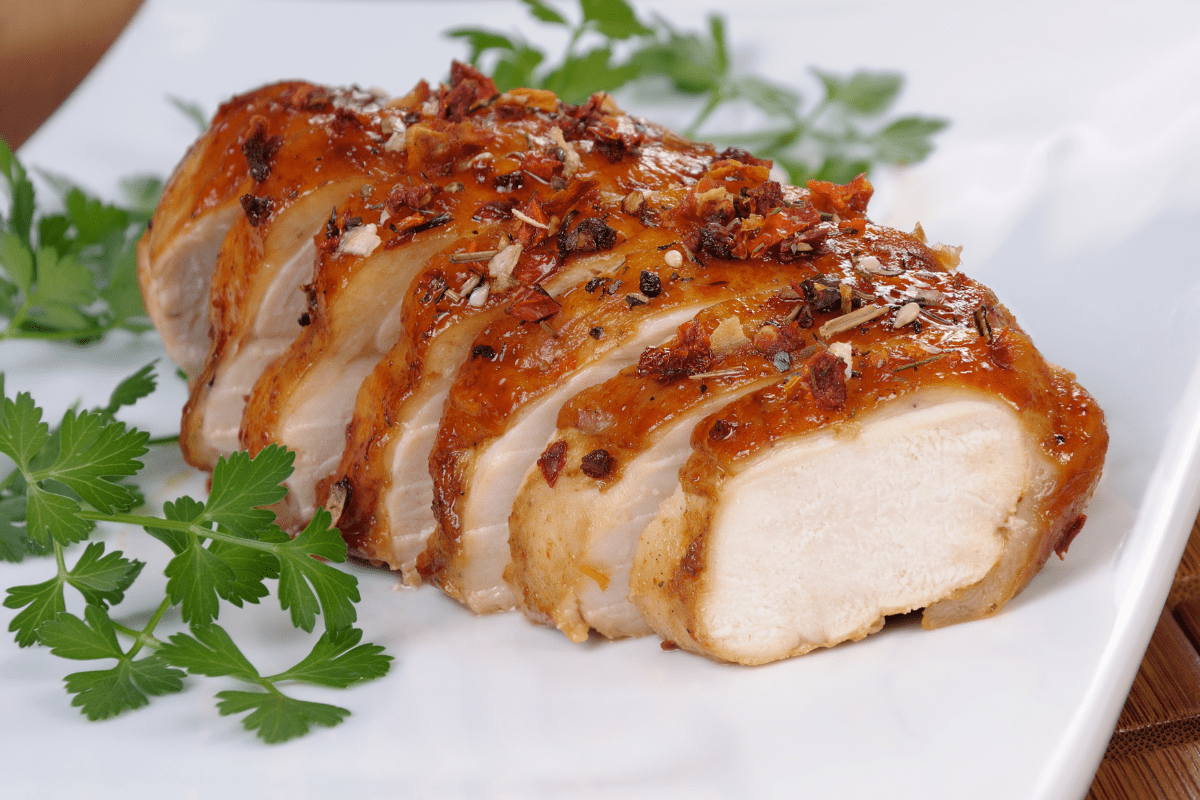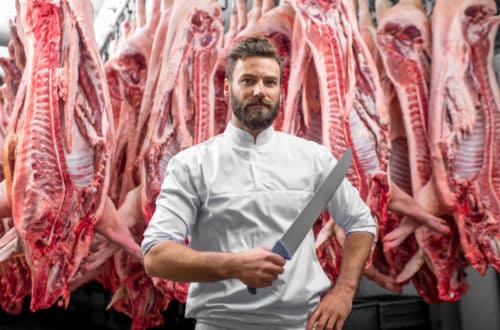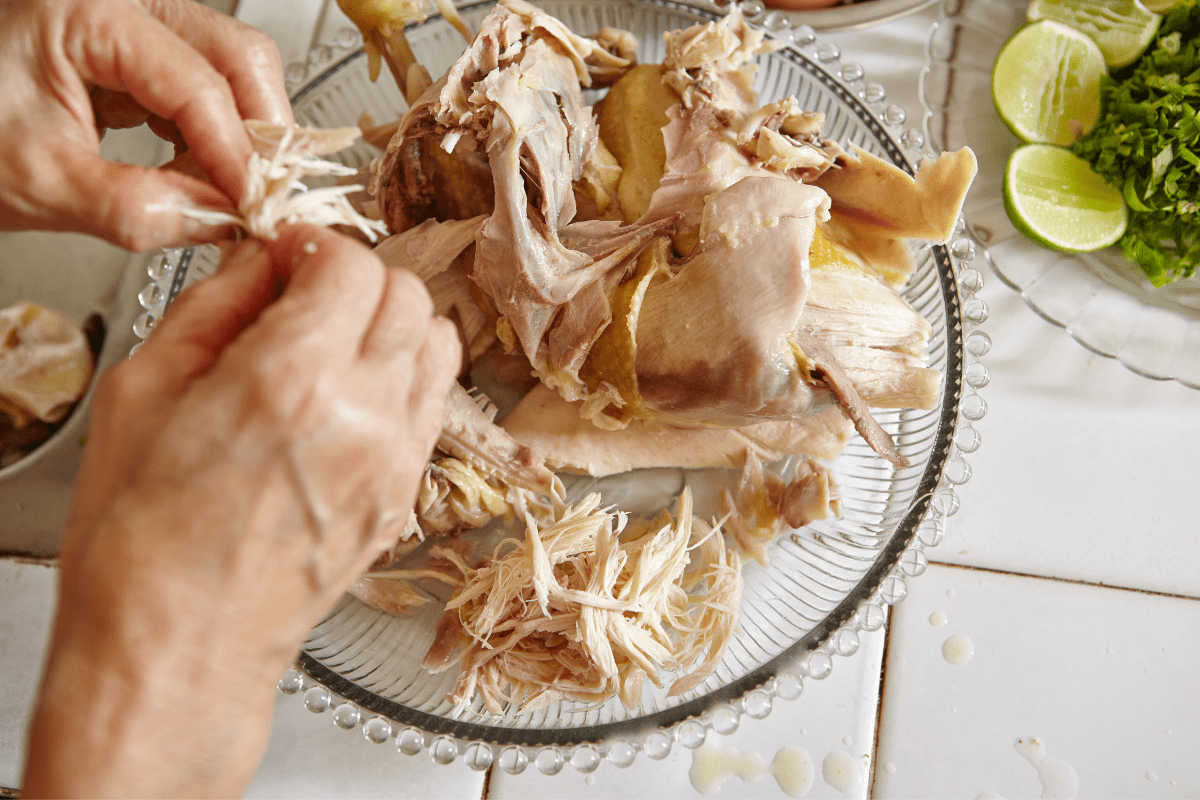Lamb is a meat that is not eaten as often as perhaps Beef or Chicken, and so it can leave the person doing the cooking wondering just how well they have to cook it.
So can Lamb be cooked so that it is rare or still pink in the centre? Yes, lamb chops, steaks, and roasts can be cooked and served rare, or medium rare, providing it has reached an internal temperature of at least 145oF. However, any form of ground or minced lamb, should be cooked thoroughly to a minimum temperature of at least 165oC, to ensure any harmful bacteria are eliminated.
We will now look at when and why it is acceptable to cook some lamb rare, and why certain other cuts should be fully cooked.
So which cuts of Lamb can be cooked rare or pink?
Essentially, any cut of lamb that is made up of solid muscle or flesh can be cooked and eaten to the doneness you prefer.
Due to the fact that most harmful food borne bacteria are present on the exterior of the meat, these will be eliminated when the outside of the meat is exposed to the high cooking heat. Very little, if any, bacteria will be present in the centre of the meat, and so the risks of getting sick are greatly reduced.
The most common cuts of lamb that can be eaten rare or pink:
- Leg of Lamb Roasts
- Leg of Lamb Steaks
- Loin Lamb Chops
- Lamb Loin Noisettes
- Loin Lamb Roasts
- Rib Lamb Chops
- Rack of Lamb
- Lamb Chump Chops

Is Eating Rare of Pink Lamb Without Risk?
No, although providing the meat is fresh and taken from a solid muscle of the animal, then the risks are far less than when other cuts are used.
Any meat, whether it be lamb, beef, pork, poultry etc, would need to be cooked to a minimum internal temperature of 165oF to truly eliminate the potential risk of getting sick from the food borne bacteria that may be present.
165oF is the temperature deemed high enough by the USDA to eradicate the risk of food poisoning provided the meat has been stored and handled correctly prior to cooking ie: stored in the refrigerator to prevent bacteria growth!
How Do You Measure The Internal Temperature of Cooked Lamb?
One of the most important tools that you can have in your kitchen is a digital food thermometer.
These gadgets will not only allow you to ensure that your food is cooked to a high enough temperature to be sure you will not be poisoning your guests or family, but they will also ensure that you do not overcook your food, making it less enjoyable to eat.
The digital food thermometer will tell you in seconds just how close your food is to being cooked, taking the guesswork out of whether it needs longer cooking or not. We all know that as little as 5 minutes extra cooking, can be the difference between juicy tender chicken breast, or dry and unpalatable offerings.
Due to the popularity, and mass production for the marketplace, you can now easily find a good digital food probe for under $20. These can be purchased in most good food equipment stores, department stores, or online.
This model is an Amazon Best Seller!
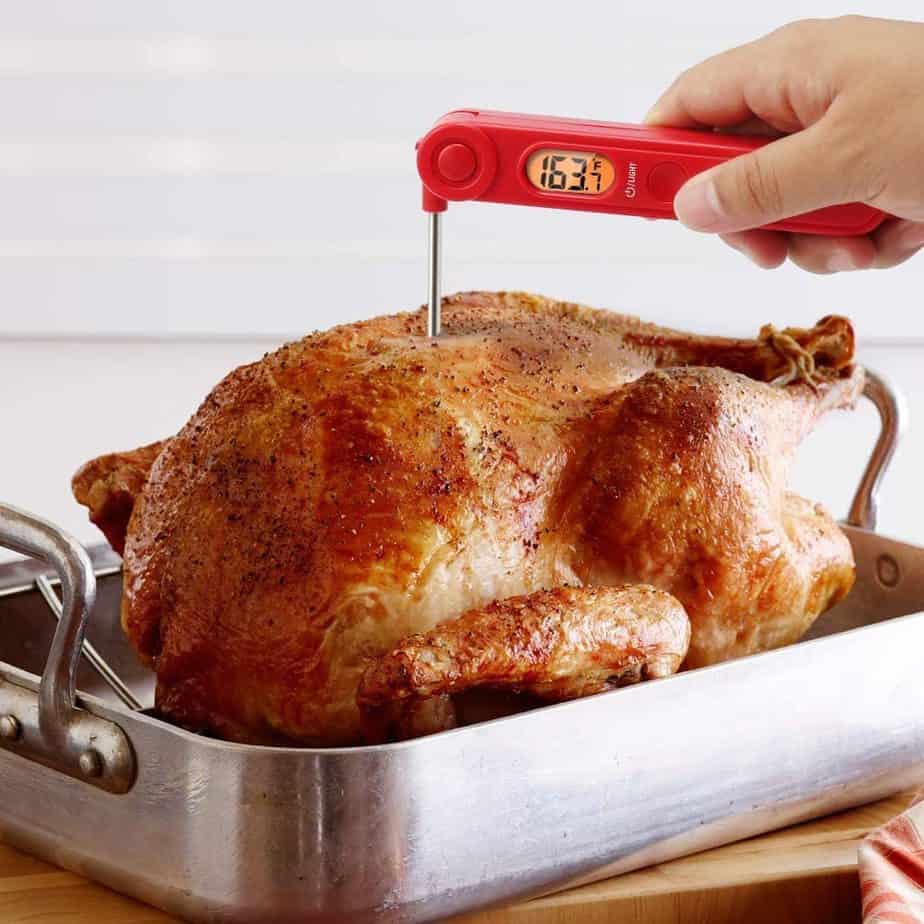
When Lamb Shouldn’t Be Eaten Rare or Pink
Not all cuts of lamb are the same, and some cuts do not work well when cooked rare, or can even give a greater chance of food poisoning when eaten with even a little pink showing.
Any form of ground or minced lamb should not be cooked under 165oF to ensure you are not putting yourself at risk.
Shoulder of lamb should also be thoroughly cooked. Although this is essentially a roast, it is a much tougher cut than the leg or loin, and should be cooked long and slow to really break down the meat fibres and become tender.
Lamb Cuts That Should Not Be Eaten Rare or Pink Include:
- Recipes using minced/ground Lamb (Shepherds Pie / Mousaka)
- Shoulder of Lamb
- Lamb Burgers
- Lamb Sausages
- Minced Lamb Kebobs, kebabs or Koftas
- Rolled Breast of Lamb / Lamb Brisket
Why Can’t Ground Lamb Be Eaten Rare or Pink?
Ground lamb is formed when different cuts are lamb are put through a grinder together.
As mentioned earlier, most food borne bacteria is found on the surface of the meat, however when the meat is put through the grinder, this chops the meat together, meaning that the bacteria that was initially on the surface, is now mixed in with the safer internal meat.
Essentially, when you make a recipe with this ground meat, there will be food borne bactria mixed throughout the whole meat. Therefore, if you do not cook the meat all the way through to a high enough temperature, those bacteria will still be present when you come to eat the meat.
For this reason, lamb burgers, koftas, minced lamb kebobs, mousaka etc should all be cooked to a minimum 165oF internal temperature to remove any risk of food poisoning!
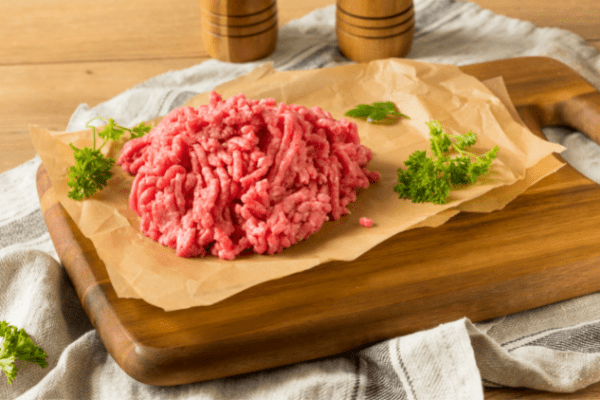
An Exception To The Rule!
One exception to this rule is when you have ground the meat using cuts of meat that have had all the surface meat removed. ie: Prime cuts from the center of the leg.
In this instance, you will have removed much of the risk of surface bacteria being mixed within the meat, and so can enjoy it cooked how you like, still ensuring it reaches a minimum internal temperature of 145oF.
Can Anyone Eat Rare or Pink Lamb?
As has already been established, eating the right cuts of lamb either rare or pink will not put you at too much risk of food poisoning.
However, due the the fact that there will always be some degree of risk that there may be harmful bacteria within the meat, it is advised that only people with a fully healthy immune system take the risk.
The following groups of people would be better avoiding eating their meat rare or pink:
- Elderley or Old People
- Young Children
- People with compromised immune systems
- People with Gastro or Digestive health problems
- People who are feeling unwell or sick
Try Eating Your Lamb Rare or Pink At Least Once!
As you can see from the article, in many instances, eating rare or pink lamb will be almost perfectly safe to do.
As a butcher for 30 years, I encouraged my customers to eat their lamb, at least on the medium rare to pink side, if they aren’t brave enough to try it fully rare.
Rare to medium rare lamb will provide you with a moist, tender and succulent eating experience that you cannot get from meat that has been cooked well, and tends to be drier and tougher.
If you are not part of the group mentioned above who should avoid eating your meat pink, then please give it a try at least once, you may just realise what you have been missing and thank me for it later.
However, make sure you have used a digital food thermometer to eliminate the guesswork, and ensure you are within the safe cooked temperatures recommended.
Here is a Recipe Video For Medium Rare Rack of Lamb – Delicious!!!

